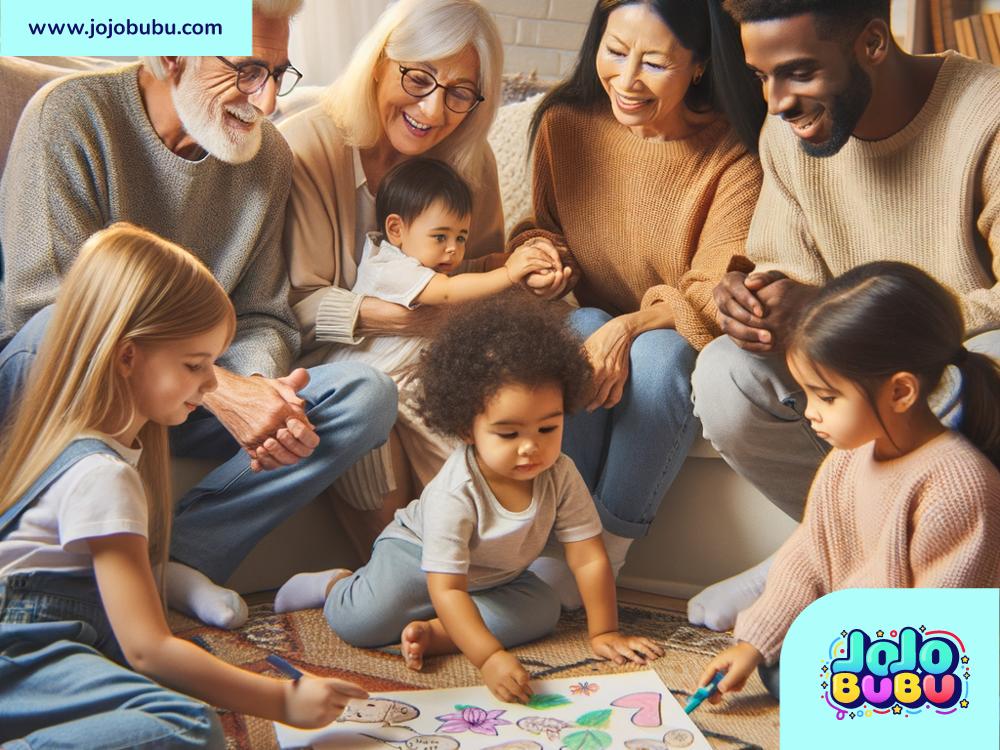Grandparents’ Role in Blended Families
Blended families, also known as stepfamilies, are created when two people get married or enter a partnership, bringing children from previous relationships into the mix. These families are becoming more common in today’s world, and while they bring love, they also come with unique challenges. In blended families, grandparents can play a very important role—not only as grandparents to their own biological grandchildren but also as loving, supportive figures for step-grandchildren. Their role requires thoughtfulness, flexibility, and a lot of love.
Embracing the Changes
In a blended family, relationships and roles within the family change. Grandparents may go from being grandparents to one set of grandchildren to suddenly adding step-grandchildren into their lives. This can take time to adjust to. It’s important for grandparents to embrace the changes instead of resisting them.
Rather than viewing the blended family situation as “different” or complicated, grandparents can approach it as an exciting opportunity to welcome more people into their family circle. Treating step-grandchildren with kindness and open hearts shows them that they belong in this newly blended family.
Building Strong Relationships
Relationships take time, especially if grandchildren are adjusting to new family structures. Grandparents can take the time to truly get to know their step-grandchildren. Listen to them, talk to them about their interests, and share your own hobbies and experiences. Simple activities like playing board games, baking cookies, or going for a walk can help build trust and create a bond.
It’s important for grandparents not to rush the process. Some children may accept their new family quickly, while others may need months or years to feel comfortable. Patience is key. By being consistent and kind, grandparents can slowly form meaningful relationships with step-grandchildren.
Supporting Parents and Stepparents
Blended families might face challenges, especially during the early stages. Parents and stepparents may be figuring out how to manage their new roles, juggle schedules, and meet the needs of everyone in the family. Grandparents can offer valuable support by being a listening ear or providing advice based on their own experiences with parenting.
Additionally, grandparents can help ease tensions and promote family unity. For example, avoiding favoritism is essential: treating biological grandchildren and step-grandchildren equally shows that everyone is valued.
Stepparents may feel stressed or unsure about their new roles in the family. Grandparents can provide encouragement by reassuring them and supporting their efforts to form bonds with the children.
Being a Source of Comfort
Children in blended families may face emotional challenges as they adjust to new caregivers, step-siblings, and routines. Grandparents can be a comforting presence during these times of transition. If the children feel overwhelmed, grandparents can step in and offer stability, kindness, and reassurance.
Children often feel safe confiding in grandparents when they need someone to talk to. Being a non-judgmental listener can help children express their feelings and cope with their emotions.
Celebrating Family Traditions and Creating New Ones
Family traditions are important in blended families because they provide a sense of stability and unity. Grandparents can help carry on traditions from their side of the family while also embracing new ones introduced by the other side. For example, if grandparents have always hosted a holiday dinner or organized a summer picnic, they can continue to do so while ensuring step-grandchildren are included.
Creating new traditions together is another way to bring the blended family closer. Grandparents can initiate activities like family game nights, crafting days, or movie marathons for everyone to enjoy. These traditions can become special memories that unite the family over time.
Promoting Love and Respect
Grandparents are wonderful role models for love and respect in blended families. By showing acceptance toward everyone in the family and treating each member kindly, grandparents can influence how children and adults interact with one another.
For example, if grandparents make an effort to respect the parenting decisions of both parents and stepparents, they set an example for children to respect authority and family dynamics. Similarly, if grandparents treat step-grandchildren with equal love and attention, children learn the importance of valuing and appreciating others.
Handling Challenges
Blended families can experience bumps along the way, and grandparents may encounter tricky situations. For instance, step-grandchildren might initially resist bonding, or biological grandchildren might feel jealous or left out. Grandparents need to be patient and address these issues in a thoughtful manner.
Rather than forcing relationships, grandparents should give children room to adjust. With time, children may grow more comfortable and open to forming stronger bonds.
If disagreements arise among the adults in the family, grandparents should avoid taking sides and aim to bring the family together instead.
Conclusion
Grandparents play a special role in blended families. They have the ability to nurture, guide, and bring everyone closer together. By building relationships, offering emotional support, promoting understanding, and creating lasting memories, grandparents help make a blended family feel whole.
A blended family may not look traditional, but it can be just as loving and beautiful. With patience, kindness, and inclusivity, grandparents can help create a family environment where every member feels valued and cared for. After all, family is not defined by blood alone—it’s built with love, trust, and connection.

